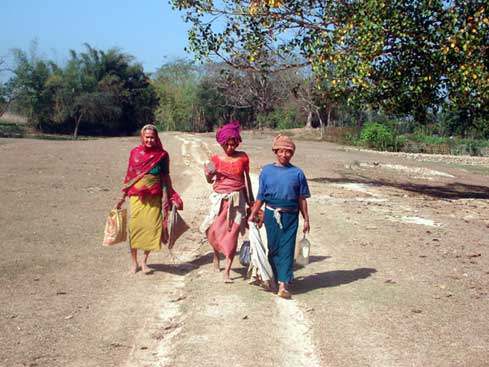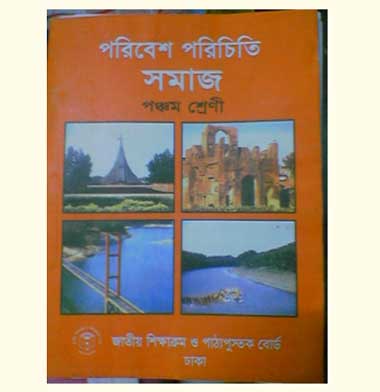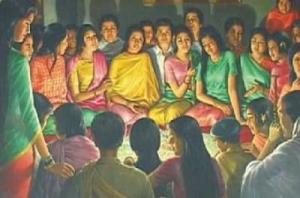T.S.Eliot wrote in his famous poetic work “Four Quartets” that time past and time present are both present in the time future. To make the way for the future we should explore our past. It is history, which is the gateway to enter into our past.
All the races or nations posses their own national history. History merely does not give an account of the rise and fall of kings or their kingdoms but it is a representation of the state of an entire civilization i.e the state of development of art and culture, literature, knowledge and science of a nation. The Bishnupriya Manipuris, being the part of a great Aryan civilization, were probably the first cultured race in possession of Manipur. Here I would rather impress upon you all to use the word ‘race’ than the word Nation. In the “History of Greece”, Dr. K.C.Choudhury said “The Greeks were rather a race then a nation since they lacked political unity which is regarded as the very foundation of national existence. The Greeks were divided into Ionians, Aeolians, Dorians and others smaller branches sprung from a single stock.” In the same manner as that of the Greeks we may say the Bishnupriya Manipuris consist of five dominant principalities under different clans like- Khumols, Moirangs, Angoms, Luwangs. Due to the ravages of time and historical misadventures the Bishnupriya Manipuri cronological history. If we go in search of the reasons behind this loss we find the following dominant factors:
Firstly, the Bishnupriya Manipuris like their Aryan ancestors lacked historical sense. Here I may recall the lines drawn by Arthur A Medonell in his “History of Sanskrit literature”: “History is one weak spot in Indian literature. It is in fact non-existent. The total lack of historical sense is so characteristic that the shadow of this defect, suffering as it does from an entire absence of exact chronology….”. The Bishnupriya Manipuris, like their ancestors, believed mostly on oral traditions.
Second, but the most dominant factor was the damage of historical relics, old records and other relevant information by the Meitei king Pamheiba or Garib Niwaj during the seventeenth century A.D.
Thirdly the three consecutive Burmese aggression to Manipur which have forced the Bishnupriya Manipuris to leave their ancestral home and settle down in different scattered locations in present Myanmar, Assam, Tripura and Bangladesh. During those dark days while people were struggling hard to save their own lives have forgotten to preserve the old records.
However, from such a virtual non-existence of any historical records some western and non-Bishnupriya Manipuri Indian writers (including historians from Manipur) have drawn brief sketches on the historical backgrounds of the Bishnupriya Manipuris. From their reference one can be sure that there were Bishnupriya Manipuris on the soil of Manipur. Among the western writers we may name Captain Pemberton, r.Brown, E.T.Dalton, T.C.Hudson, E.Gait, B.C.Allen, and Major Mc Cullock etc. But some of them quoted distorted facts under the influence of Meitei kings and intellectuals. Even the great master compiler of Linguistic survey of India, Sir G.A.Grierson could not free himself completely from referring to such distorted facts.
However, we express our heartfelt gratitude to him because with his justified statements we have won our war against the menace of a sested interests to cut out our existence from our historical roots. We pay our deep respect too to Late R.M.Nath who has highlighted certain facts on the history of the Bishnupriya Manipuris in his famous work “Background of Assamese Culture”.
History is a Science based on facts and reason, leading from hypothesis to thesis (from hypothetical knowledge to logical conclusion). Who will write history of this race? I may answer this question in the spirit of Bankim Chandra Chattapadhyaya that “It is I; It is you”. All of the Bishnupriya Manipuris should write their own history because in its truest sense only the Bishnupriya Manipuris can approach sincerely on the indepth and systematic study in this field.
Here we also remember with deep respect the works done by Late Mahendra Kumar Sinha. He is the pioneer in Bishnupriya Manipuri historical research. His work is compiled into three volumes of “Manipurer Prachin Itihas”, the first of which has been published earlier. We are awaiting eagerly the publication of the remaining volumes. Late Sena Singha contributed a lot with his work “Manipurer Itibritta”. But some of his findings are not free from controversy. We pay our deep respect to him too.Other scholars also contributed a lot in this field. They are Late Krishna Kumar Singha, Haridas Singha and other respected persons. There are other interested persons who have sincerely devoted themselves to the study of history. Most of their works are yet to be published. We are certain that one cannot be totally agree to all the findings by the earlier scholars as mentioned above. Moreover with the passage of time more informations are coming into light, which bring new spheres of speculations.
Contributed By – Dils Lakshmindra Sinha
* Excerpts from the Welcome address by the convener in the seminar on the History of the Bishnupriya Manipuris







